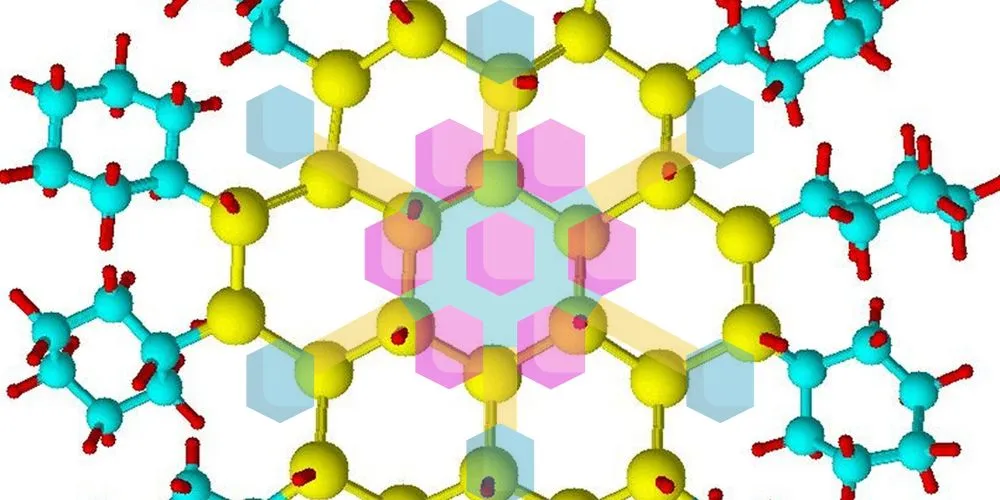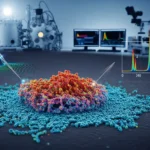In the intricate realm of nanotechnology, Nanocrystals emerge as fascinating entities, offering a glimpse into the quantum world at the nanoscale. This article delves into the multifaceted universe of Nanocrystals, unraveling their unique properties, diverse synthesis methods, and myriad applications that span from medicine to electronics, casting a spotlight on their potential to revolutionize various scientific domains.
The intricacies of nanocrystals
It is often measured in the nanometer range and represents a distinct class of materials with quantum properties that differentiate them from their bulk counterparts. At this scale, quantum effects become prominent, influencing these diminutive structures’ optical, electronic, and magnetic characteristics. The intricacies lie in their ability to exhibit size-dependent properties, offering a playground for scientists and engineers to manipulate matter with unparalleled precision.
Quantum Properties Unveiled
The quantum properties of Nanocrystals stem from the confinement of electrons within their nanoscale dimensions. As the size of the crystal approaches the quantum scale, electrons experience quantum confinement, leading to discrete energy levels. This phenomenon manifests in the unique optical properties of Nanocrystals, such as quantum dots, whose size dictates the wavelengths of emitted light. Harnessing these quantum properties unlocks a spectrum of applications ranging from ultra-efficient LEDs to advanced medical imaging.
Size-Dependent Characteristics
One of the key intricacies of Nanocrystals is their size-dependent characteristics. As the dimensions of the crystal change, so do its electronic and optical properties. This size tunability is a hallmark feature, allowing scientists to tailor Nanocrystals for specific applications precisely. Whether tuning the bandgap for semiconductor devices or fine-tuning the emission color in biological imaging, the ability to control size-dependent characteristics is pivotal for exploiting the full potential of Nanocrystals.
Synthesis Methods for Nanocrystals
The synthesis of Nanocrystals is a delicate and precise process, with various methods tailored to control size, shape, and composition. From top-down approaches to bottom-up techniques, each method offers a unique set of advantages, contributing to the versatility and tunability of Nanocrystals for diverse applications.
Top-Down Approaches: Carving Precision
Top-down approaches involve reducing bulk materials to nanoscale dimensions. Techniques like ball milling and laser ablation enable the carving of nanocrystals from larger structures with high precision. This approach is particularly useful for producing well-defined Nanocrystals for applications in catalysis, electronics, and optics, showcasing the precision achievable through top-down synthesis.
Bottom-Up Techniques: Building from the Atom-Up
Bottom-up techniques focus on building Nanocrystals from individual atoms or molecules. Methods such as sol-gel synthesis and chemical vapor deposition allow for the controlled growth of Nanocrystals, offering atomic-level precision. This approach is instrumental in creating complex structures like quantum dots and nanowires, where building from the atom up provides unparalleled control over the final product.
Amphiphilic Surfactant Methods
Ensuring Stability and Uniformity Amphiphilic surfactant methods combine top-down and bottom-up approaches, ensuring stability and uniformity during Nanocrystal synthesis. Using surfactants to control particle growth provides a versatile way to produce Nanocrystals with well-defined properties. Amphiphilic surfactant methods are particularly valuable for applications requiring uniform size distribution, such as biomedical imaging and drug delivery.
Applications of Nanocrystals
The versatility of Nanocrystals opens up myriad applications across diverse fields, showcasing their potential to revolutionize industries and technologies. From advancements in medicine to breakthroughs in electronics, Nanocrystals are at the forefront of cutting-edge research and development.
Quantum Dots in Biomedical Imaging
Quantum dots, a subtype of Nanocrystals, shine brightly in biomedical imaging applications. Their size-tunable emission properties make them ideal for labeling and tracking biological entities at the cellular and molecular levels. Nanocrystals serve as luminescent beacons in diagnostics and therapeutics, offering a quantum leap in precision for medical imaging, disease detection, and targeted drug delivery.
Nanocrystal-Based LEDs for Efficient Lighting
Nanocrystals’ unique optical properties find practical lighting applications. Nanocrystal-based LEDs, or quantum-dot LEDs, promise more energy-efficient and vibrant displays. By precisely engineering the size and composition of nanocrystals, researchers can tailor the color and efficiency of the emitted light, paving the way for next-generation displays and lighting solutions.
Catalysis and Nanocrystal Efficiency
Nanocrystals play a crucial role in catalysis, where their high surface-to-volume ratio enhances catalytic efficiency. Catalytic Nanocrystals, with precisely engineered properties, become catalysts for chemical reactions, finding applications in environmental remediation, energy production, and the synthesis of valuable chemicals. This catalytic prowess showcases the potential of Nanocrystals in driving sustainable and efficient chemical processes.
Challenges and Future Prospects of Nanocrystals
While Nanocrystals present many opportunities, scalability, toxicity, and long-term stability must be addressed for widespread adoption. Prospects involve overcoming these challenges and exploring emerging avenues to unlock the full potential of Nanocrystals across various scientific and technological domains.
Scalability for Mass Production
The scalability of Nanocrystal synthesis methods is a crucial challenge researchers are actively addressing. Ensuring that the precision achieved in laboratory settings can be replicated on an industrial scale is vital for the mass production of Nanocrystals. Innovations in synthesis techniques and manufacturing processes are key to making Nanocrystal-based technologies more accessible and cost-effective.
Addressing Toxicity Concerns
As Nanocrystals find their way into biomedical applications and consumer products, addressing potential toxicity concerns is paramount. Research is ongoing to understand Nanocrystals’ long-term effects on biological systems and the environment. Future developments may involve designing biocompatible Nanocrystals and establishing comprehensive guidelines for their safe use.
Long-Term Stability in Applications
Ensuring the long-term stability of Nanocrystals in various applications is a challenge researchers are actively working to overcome. Factors such as degradation over time can impact the performance of Nanocrystal-based devices. Prospects involve developing robust coating techniques and storage methods to enhance the stability of Nanocrystals, making them more reliable for extended applications.
Conclusion
Nanocrystals emerge as captivating entities at the intersection of nanotechnology and quantum physics, illuminating the path toward unprecedented scientific and technological advancements. Their quantum properties, precise synthesis methods, and versatile applications position Nanocrystals as key players in the ongoing exploration of the nanoscale world.
As challenges are met with innovative solutions and new frontiers are unveiled, Nanocrystals are poised to redefine our understanding of materials and reshape the landscape of various industries, bringing the quantum world into clearer focus. In the dynamic realm of nanotechnology, Nanocrystals shine as beacons of innovation, promising a future where the quantum properties of the nanoscale illuminate a path toward transformative discoveries and applications.





